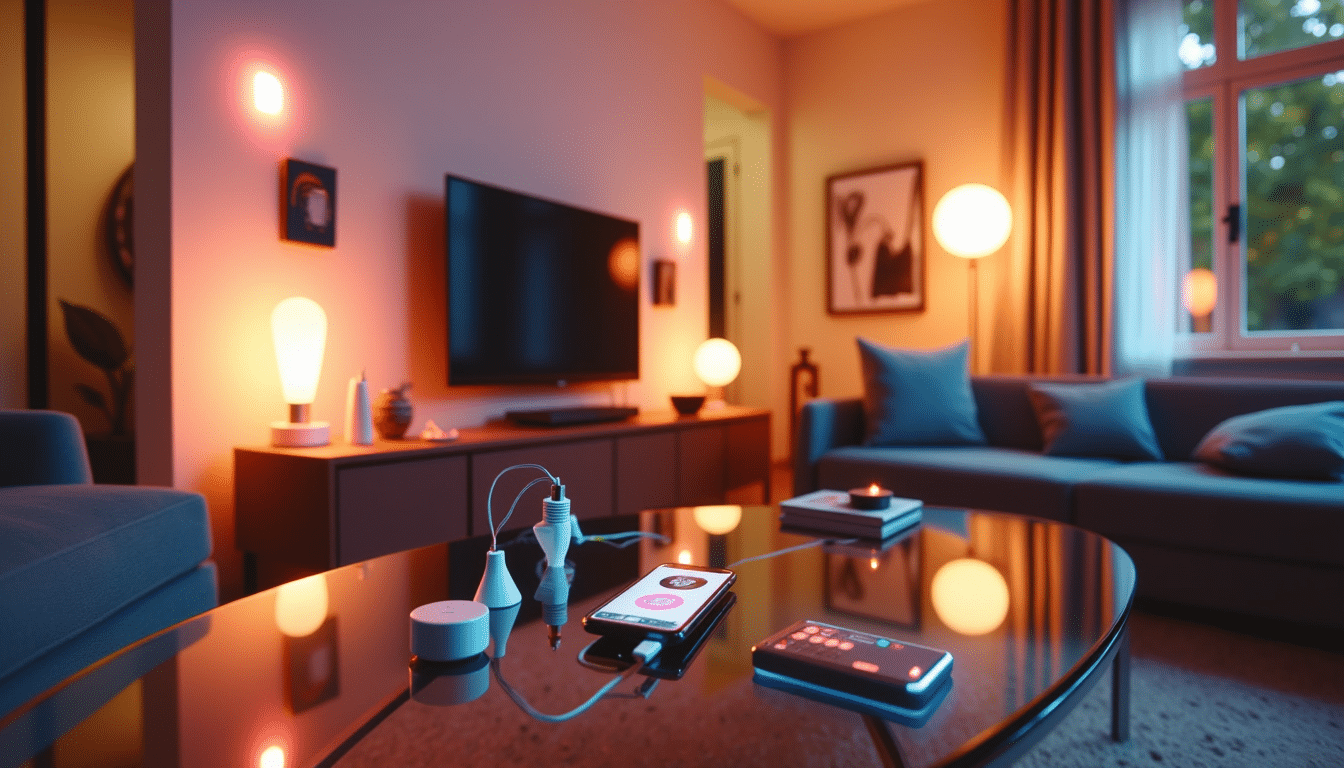Start with Simple Smart Plugs
The easiest way to dip your toes into smart home living is with smart plugs. These little devices slot straight into your regular socket – you then plug your standard appliance straight into the smart plug. That’s it. From there, you can use your mobile phone, tablet, or voice assistant (like Alexa or Google Home) to turn the gadget on or off, schedule it to run at certain times, or link it up to other smart routines.
They’re especially handy for things you regularly forget to switch off – like a heater in the spare room or the bedside lamp. I know a few people who use one on their slow cooker, setting it to switch off even if they’re stuck at work. Safety aside, it’s just a smarter way to manage your electricity, and over time, it can even cut down on your bills.
Wireless Switches and Sensors That Don’t Need Power
If you fancy more control but can’t go lifting floorboards to run new cables, battery-powered smart switches and sensors are the way to go. A lot of these are self-adhesive and can be placed wherever suits you – mounted on the wall, on furniture, or even kept loose like a remote.
Some systems, like KNX RF or energy-harvesting switches from ZF, work independently of any wiring. They send wireless signals to your smart hub or directly to smart bulbs and plugs. I’ve tested a few of these and they’re surprisingly reliable. Motion sensors can be placed in a hallway to trigger night lights or even set up to send mobile alerts if there’s unexpected movement – useful if you’re away from home often.
And here’s a clever use I spotted in a Victorian flat in Chorley: a wireless switch by the bed to control lights in the living room. No need to get up when you’re winding down for the night – just a simple tap and all’s off.
Swap Bulbs, Not Fixtures
This one seems obvious, but it’s often overlooked: smart bulbs. These aren’t just for changing colours to set a mood (although they do that brilliantly). They plug into your existing lamp holders – bayonet or screw cap, just double-check which type you have – and can be grouped, dimmed, timed, or triggered by motion or voice.
You don’t need to replace every bulb in the house at once. Start with your key areas: entry hall, bedside lamp, and lounge ceiling fitting. Once those are set up, you’ll get a feel for how convenient the system is and you can expand as you go.
If you’re fancying a bit of logic in your setup, many apps let you set scenes – for example, have your bulbs dim to 30% and shift to warm white at 9pm to help wind down, or mimic occupancy when you’re on holiday by turning lights on and off at random intervals.
Layer Your Smart Home Without Overdoing It
The key with smart upgrades is to go layer by layer. Begin with the basics – smart plugs and a couple of bulbs – then branch into switches and motion sensors if needed. There’s no pressure to make everything smart straightaway. One of the perks of wireless smart homes is the flexibility to grow the system around your life, not the other way round.
It’s also worth investing in a central smart hub if you plan to build a larger system. It can help keep everything running smoothly, especially if you’re mixing brands or using automations. Look for compatibility with the Matter standard if future-proofing’s on your mind.
Final Tip
If you’re a renter or living in an older property where the wiring’s seen better days, don’t feel locked out of the smart home scene. Wireless tech’s levelled the playing field. You can still enjoy automated lights, safer appliance control, and modern convenience using your existing setup – and if you move, you can simply take your smart kit with you. No lost investment. No trades needed. Just smarter living, socket by socket.







